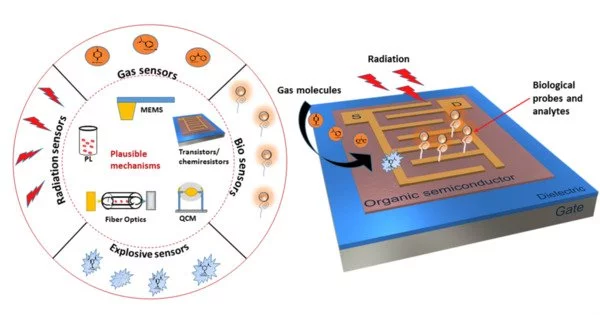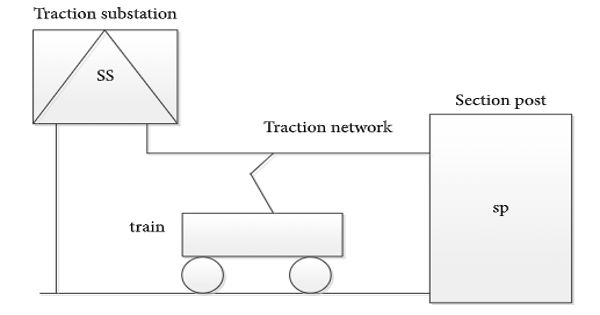An organic field-effect transistor (OFET) is a form of FET that uses organic materials as the semiconductor rather than standard inorganic materials such as silicon. It is a field-effect transistor with a channel made of organic semiconductors. OFETs are an important component in the field of organic electronics, which tries to create electrical devices from organic materials such as polymers or tiny organic compounds.
OFETs can be made by vacuum evaporating tiny molecules, solution-casting polymers or small molecules, or mechanically transferring a peeled single-crystalline organic layer onto a substrate. These organic materials have various advantages, including flexibility, lightweightness, and the ability to be used in low-cost production methods such as printing. These devices have been developed to realize low-cost, large-area electronic products and biodegradable electronics.
OFETs with various device geometries have been manufactured. A bottom gate with a top drain and source electrodes is the most often utilized device design because it is identical to the thin-film silicon transistor (TFT) using thermally generated SiO2 as gate dielectric.
Here are some key characteristics and features of Organic Field-Effect Transistors:
- Organic Semiconductors: Organic semiconductors are used as the active material in the transistor channel in OFETs. These organic compounds have features that allow electrical current to be controlled based on an applied voltage at the gate electrode.
- Thin Film Deposition: Organic semiconductors are often placed on a substrate as thin films, frequently utilizing processes like spin coating, inkjet printing, or vapor deposition. This provides for greater freedom in substrate material selection and the creation of large-area devices.
- Flexible and Lightweight: OFETs are excellent for applications in flexible electronics, wearable gadgets, and rollable displays since organic materials are often more flexible and lightweight than inorganic counterparts.
- Charge Carrier Mobility: One important parameter for OFETs is charge carrier mobility, which describes how easily charge carriers (electrons or holes) can move through the organic semiconductor. While organic materials generally have lower mobilities compared to silicon, they have made significant progress in improving this aspect in recent years.
Applications
OFETs are used in a variety of applications, including flexible displays, RFID tags, electronic paper, biosensors, and more. They appear to be very promising for next-generation, lightweight, and flexible electronics.
Dielectric materials can also be organic polymers such as poly(methyl-methacrylate) (PMMA). One of the advantages of OFETs, especially when compared to inorganic TFTs, is their unparalleled physical flexibility, which leads to biocompatible applications, such as individualized biomedicines and bioelectronics in the future healthcare business.
















